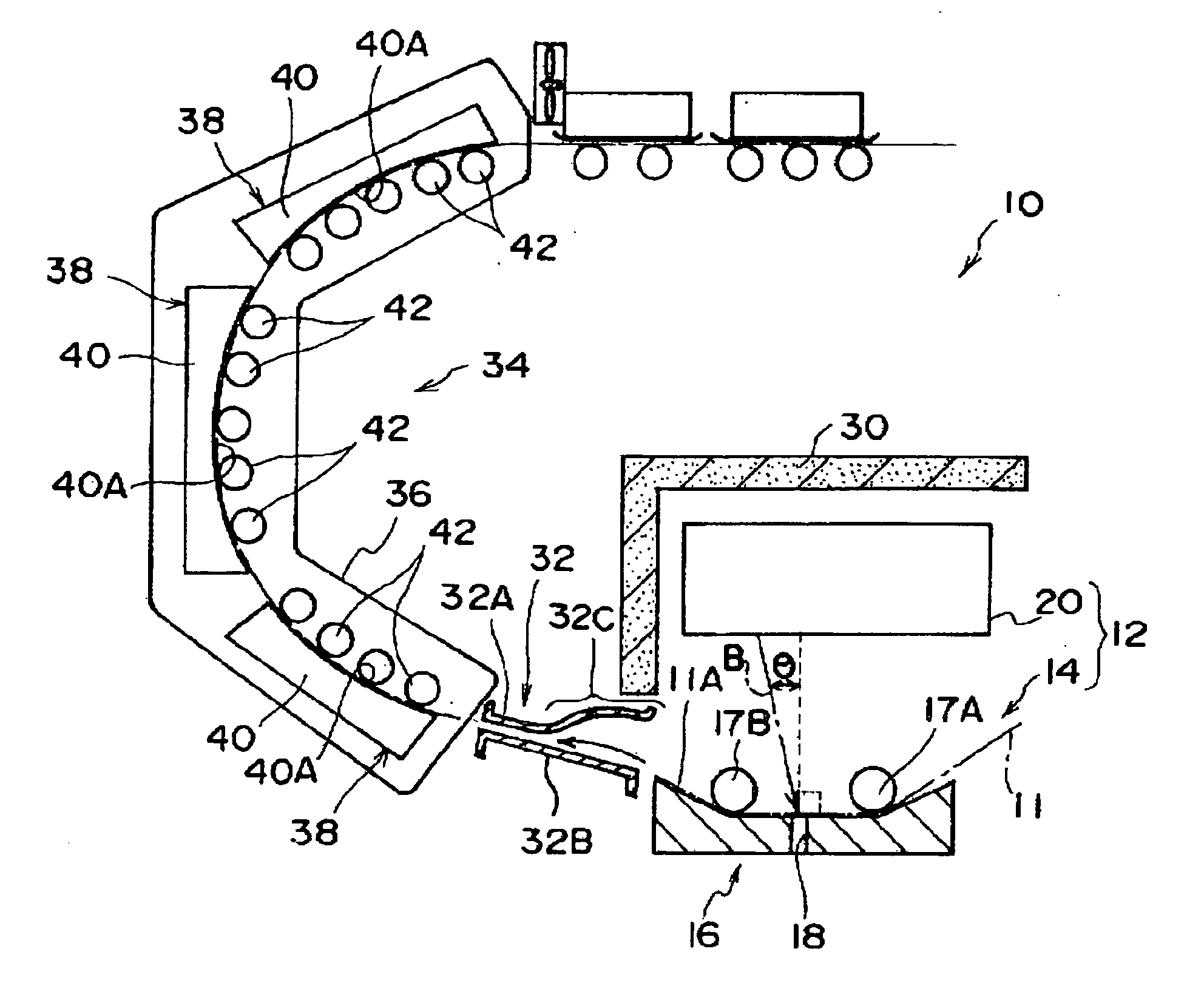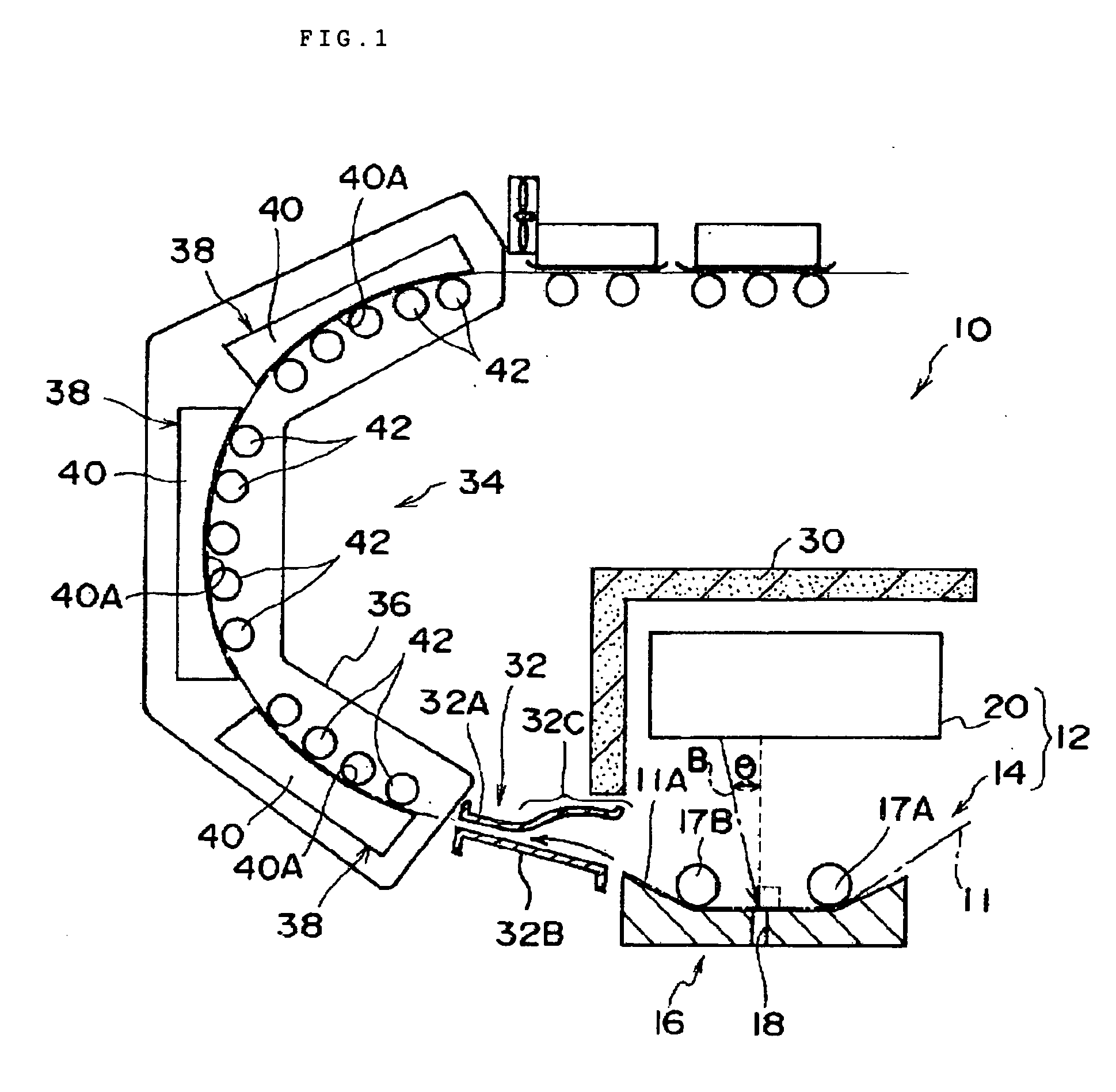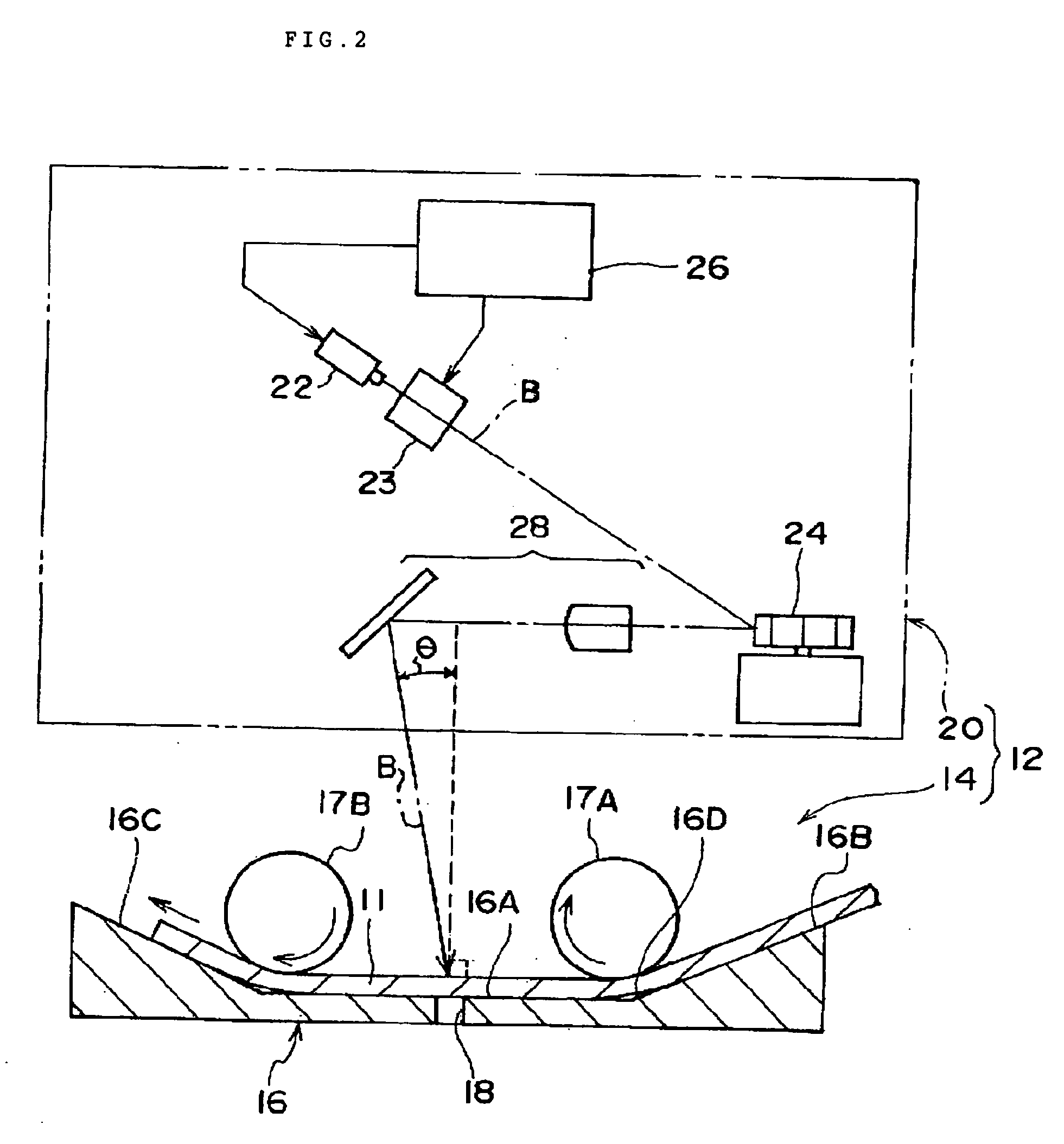Image forming method for the photothermographic material
a technology of photothermographic material and image forming system, which is applied in the field of photothermographic material, can solve the problems of insufficient image quality of medical images in the digital recording imaging material obtained by such a general image forming system, and the level at which it can replace medical silver salt film processed by conventional wet development,
- Summary
- Abstract
- Description
- Claims
- Application Information
AI Technical Summary
Benefits of technology
Problems solved by technology
Method used
Image
Examples
example 1
[0459] (Preparation of PET Support)
[0460] PET having IV (intrinsic viscosity) of 0.66 (measured in phenol / tetrachloroethane=6 / 4 (weight ratio) at 25° C.) was obtained according to a conventional manner using terephthalic acid and ethylene glycol. The product was pelletized, dried at 130° C. for 4 hours, melted at 300° C. Thereafter, the mixture was extruded from a T-die and rapidly cooled to form a non-tentered film having such a thickness that the thickness should become 175 μm after tentered and thermal fixation.
[0461] The film was stretched along the longitudinal direction by 3.3 times using rollers of different peripheral speeds, and then stretched along the transverse direction by 4.5 times using a tenter machine. The temperatures used for these operations were 110° C. and 130° C., respectively. Then, the film was subjected to thermal fixation at 240° C. for 20 seconds, and relaxed by 4% along the transverse direction at the same temperature. Thereafter, the chucking part wer...
example 2
[0572]>
[0573] Preparations of photothermographic material-9 to -13 were conducted in the similar manner to the preparation of photothermographic material-1, except that two or more image forming layers was set as shown in Table 2, while a sample of the photothermographic material was produced by subjecting reverse surface of the back surface to simultaneous overlaying coating by a slide bead coating method in order of the image forming layer, intermediate layer, first layer of the surface protective layer and second layer of the surface protective layer starting from the undercoated face.
[0574] Other preparations and evaluations were executed in the similar manner to Example 1. Results are shown in Table 2. In the table, the layers are called from near side of the support; lower layer, middle layer and upper layer.
TABLE 2Silver halide emulsionMixingPhotothermographicParticleratio bySensitivityγ valuematerialNo.size (nm)Ag molDminlogEDmaxD = 0.5D = 1.09upper layer75200.150.263.91....
example 3
[0576] (Preparation of silver halide emulsion-4)
[0577] To 1420 mL of distilled water was added 4.3 mL of a 1% by weight potassium iodide solution, further, added 3.5 mL of 0.5 mol / L sulfuric acid and 36.7 g of phthalated gelatin, and the resulted solution was kept at 42° C., while stirring in a stainless reaction bottle, and solution A prepared by diluting 22.22 g of silver nitrate in distilled water to give a volume of 95.4 mL and solution B prepared by diluting 11.1 g of potassium bromide and 6.6 g of potassium iodide in distilled water to give a volume of 103 mL, were added in their entireties to the solution, over 3 minutes. Then, 10 mL of a 3.5% by weight hydrogen peroxide aqueous solution was added, further, 10.8 mL of a 10% by weight benzimidazole aqueous solution was added. Further, solution C prepared by adding distilled water to 51.86 g of silver nitrate for dilution to 317.5 mL was added at constant flow rate in its entirety over 50 minutes and solution D prepared by dil...
PUM
 Login to View More
Login to View More Abstract
Description
Claims
Application Information
 Login to View More
Login to View More - R&D
- Intellectual Property
- Life Sciences
- Materials
- Tech Scout
- Unparalleled Data Quality
- Higher Quality Content
- 60% Fewer Hallucinations
Browse by: Latest US Patents, China's latest patents, Technical Efficacy Thesaurus, Application Domain, Technology Topic, Popular Technical Reports.
© 2025 PatSnap. All rights reserved.Legal|Privacy policy|Modern Slavery Act Transparency Statement|Sitemap|About US| Contact US: help@patsnap.com



